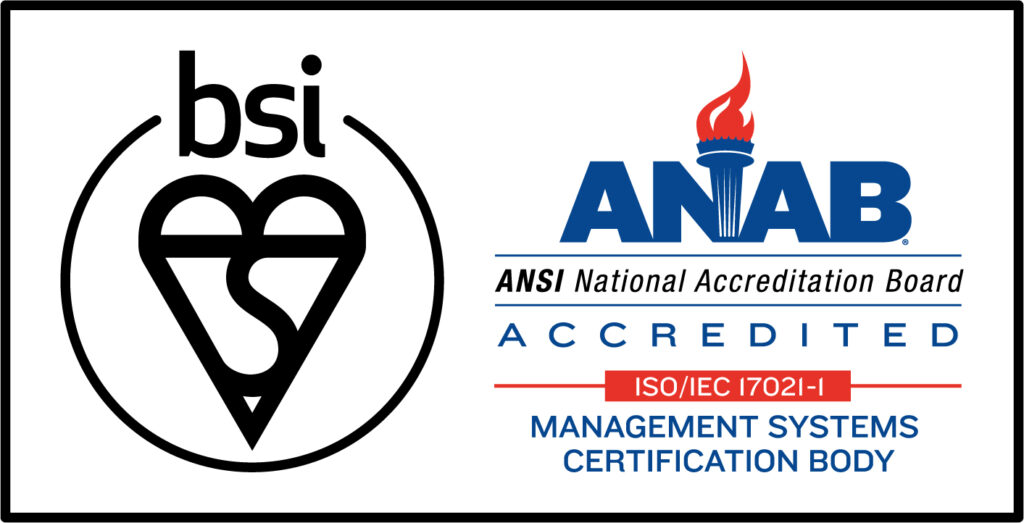Trong thế giới kỹ thuật ngày nay, rào cản ngôn ngữ có thể là một thách thức lớn, đặc biệt là trong các cuộc họp quốc tế nơi tiếng Anh được sử dụng như ngôn ngữ chung. Đối với những người làm việc trong lĩnh vực kỹ thuật, nhu cầu dịch tiếng Anh chính xác không chỉ dừng lại ở việc hiểu ý nghĩa cơ bản mà còn cần chính xác về mặt kỹ thuật. Bài viết này sẽ khám phá cách thức ứng dụng dịch tiếng Anh chuyên ngành kỹ thuật có thể giúp bạn giao tiếp hiệu quả hơn trong môi trường làm việc đa văn hóa và tăng cường hiệu suất công việc của bạn.
Tiếng Anh Chuyên Ngành Là Gì?
Trong thế giới toàn cầu hóa hiện nay, tiếng Anh không chỉ là ngôn ngữ quốc tế mà còn là ngôn ngữ chuyên ngành trong nhiều lĩnh vực như kỹ thuật, y tế, kinh doanh, và giáo dục. Tiếng Anh chuyên ngành, khác biệt với tiếng Anh thông thường, đòi hỏi sự hiểu biết sâu sắc về thuật ngữ và cách sử dụng ngôn ngữ trong một lĩnh vực cụ thể. Nắm vững tiếng Anh chuyên ngành không chỉ giúp chúng ta giao tiếp hiệu quả trong môi trường chuyên nghiệp mà còn mở ra cánh cửa cho nhiều cơ hội hợp tác quốc tế.

Tầm Quan Trọng của Dịch Tiếng Anh Chuyên Ngành Kỹ Thuật
Đừng coi nhẹ việc dịch
Ngôn ngữ kỹ thuật chứa đầy thuật ngữ và khái niệm phức tạp, đòi hỏi sự chính xác tuyệt đối. Trong một cuộc họp, mỗi từ ngữ sai lệch có thể dẫn đến hiểu lầm, làm ảnh hưởng đến quyết định và kết quả công việc hoặc thậm chí là những tai nạn nghiêm trọng.
Dịch sai có thể dẫn đến hậu quả nghiêm trọng
Ví dụ điển hình là vào năm 1983, sự cố hàng không nổi tiếng được biết đến với tên gọi “Gimli Glider” đã xảy ra, liên quan đến một chiếc Boeing 767 của Air Canada. Sự cố này bắt nguồn từ một sai lầm trong quá trình chuyển phiên dịch đơn vị đo lường nhiên liệu từ hệ thống mét sang hệ thống Anh, dẫn đến việc máy bay cạn kiệt nhiên liệu giữa chuyến bay.

Trên chuyến bay này, có 61 hành khách và 8 thành viên phi hành đoàn, tất cả đều phụ thuộc vào kỹ năng và phán đoán của phi công khi đối mặt với tình huống khẩn cấp. Máy bay đã cạn nhiên liệu ở độ cao 41,000 feet, và phi công đã phải nhanh chóng đưa ra quyết định thực hiện một cuộc hạ cánh không có nhiên liệu tại một đường băng cũ ở Gimli, Manitoba. Mặc dù sự cố này đặt máy bay và tất cả mọi người trên khoang vào tình huống nguy hiểm, nhưng nhờ vào kỹ năng và sự bình tĩnh của phi hành đoàn, chiếc máy bay đã hạ cánh an toàn mà không gây thương tích nghiêm trọng cho bất kỳ ai.
Sự cố “Gimli Glider” không chỉ là một câu chuyện về sự sống còncủa việc dịch thuật chính xác từ chuyên môn trong ngành cơ khí và hàng không. Vì vậy mỗi người phiên dịch đều nên tham khảo ý kiến của bên thứ ba hoặc sử dụng những công cụ hỗ trợ.
Dịch Tiếng Anh Chuyên Ngành Có Gì Khó?
Dịch tiếng Anh chuyên ngành đặt ra nhiều thách thức. Đầu tiên, việc hiểu và sử dụng chính xác các thuật ngữ kỹ thuật là điều không hề đơn giản. Sự phức tạp của ngôn ngữ chuyên ngành đòi hỏi người dịch phải có kiến thức sâu rộng về lĩnh vực đó. Thứ hai, ngữ pháp và cấu trúc câu trong tiếng Anh chuyên ngành thường khác biệt so với tiếng Anh thông thường, yêu cầu một sự hiểu biết chuyên sâu. Cuối cùng, việc duy trì sự chính xác và nhất quán trong suốt bản dịch là không hề dễ dàng, đặc biệt khi phải dịch lượng lớn thông tin chuyên ngành.
Dưới đây là bảng thống kê những từ ngữ chuyên ngành cho ngành cơ khí để bạn tham khảo.
Bảng Từ Vựng Dịch Tiếng Anh Chuyên Ngành Cơ Khí
Tiếng Anh | Tiếng Việt |
lathe | máy tiện |
milling machine | máy phay |
welding | hàn |
tolerance | độ chính xác |
fatigue strength | độ bền mỏi |
gearbox | hộp số |
hydraulics | thủy lực |
pneumatics | khí nén |
CAD (Computer Aided Design) | CAD (Thiết kế hỗ trợ bởi máy tính) |
CAM (Computer Aided Manufacturing) | CAM (Sản xuất hỗ trợ bởi máy tính) |
prototype | nguyên mẫu |
benchmarking | đánh giá so sánh |
automation | tự động hóa |
CNC machine | máy CNC |
torque | mô-men xoắn |
dynamics | động học |
kinematics | kinh học |
thermal expansion | sự giãn nở nhiệt |
blueprint | bản vẽ kỹ thuật |
assembly line | dây chuyền lắp ráp |
III. Phương Pháp để Dịch Tiếng Anh Chuyên Ngành Mượt Nhất
Sử Dụng Các App Dịch Tiếng Anh Chuyên Ngành Phụ Trợ
Trong thời đại công nghệ số, việc sử dụng các ứng dụng dịch tiếng Anh chuyên ngành có thể hỗ trợ đắc lực trong quá trình dịch. Các ứng dụng này không chỉ cung cấp bản dịch nhanh chóng mà còn đảm bảo độ chính xác cần thiết cho ngôn ngữ chuyên ngành. Mặc dù Google Translate có thể giúp bạn dịch các văn bản một cách nhanh chóng, nhưng trong các cuộc họp thì việc đó gần như không thể.
Vì thế app phiên dịch tiếng anh chuyên ngành VoicePing hiện đang rất được ưa chuộng thời gian gần đây. Trước đây, phần lớn các app dịch chỉ có thể dịch từ văn bản sang văn bản, nhưng với sự phát triển của công nghệ nhận dạng giọng nói, các ứng dụng dịch đã có thể dịch giọng nói thành văn bản. Với độ chính xác nhận dạng ngôn ngữ lên đến 97,6% như VoicePing
Nếu bạn đang là người học tiếng Anh, đang mong muốn có cơ hội được tiếp xúc, làm việc và giao lưu với bạn bè, đối tác, khách hàng mà lại lo sợ trình độ ngôn ngữ của mình chưa tốt thì các app dịch tiếng Anh sẽ là giải pháp cho bạn.
Hơn nữa, công cụ này có thể kết nối với màn hình và sử dụng như một công cụ phiên dịch cho các cuộc triển lãm và hội thảo.
Nhiều doanh nghiệp sử dụng công cụ này vì nó được trang bị các chức năng tiện lợi như dịch giọng nói theo thời gian thực và có thể sử dụng an tâm về mặt bảo mật.
App dịch giọng nói VoicePing có các tính năng sau:
- Dịch giọng nói ngay lập tức và chuyển thành văn bản
- Dịch trực tiếp video trên YouTube.
- Sử dụng app như một người biên phiên dịch trực tiếp
- Bạn có thể tóm tắt dữ liệu bản ghi bằng ChatGPT
- Được trang bị ứng dụng để tích hợp với các cuộc họp trên website
- Hỗ trợ 42 ngôn ngữ bao gồm tiếng Anh, tiếng Anh, tiếng Trung, tiếng Việt và tiếng Indonesia
- Voiceping cũng có thể được sử dụng như một công cụ phiên dịch cho các cuộc triển lãm và hội thảo. Một mã QR có thể được sử dụng cho các sự kiện có hơn 1000 người.
Link tải:
Cải Thiện Vốn Từ Vựng để Dịch Tiếng Anh Chuyên Ngành
Một trong những bước quan trọng nhất trong việc dịch tiếng Anh chuyên ngành là việc mở rộng và cải thiện vốn từ vựng. Điều này không chỉ bao gồm việc học thuật ngữ chuyên ngành mà còn cả cách sử dụng chúng trong ngữ cảnh cụ thể. Bạn có thể bắt đầu bằng cách đọc các tài liệu chuyên ngành, tham gia các khóa học trực tuyến, hoặc thậm chí tham dự hội thảo và hội nghị chuyên ngành để tiếp xúc với ngôn ngữ chuyên ngành thực tế.

Cải Thiện Kỹ Năng Nói Khi Dịch với Phương Pháp Shadowing
Phương pháp Shadowing là một kỹ thuật học tiếng Anh hiệu quả, đặc biệt trong việc cải thiện kỹ năng nói và phát âm. Phương pháp này bao gồm việc nghe và lặp lại ngay lập tức sau một người bản xứ, giúp bạn làm quen với cách phát âm và ngữ điệu tự nhiên trong tiếng Anh. Khi áp dụng vào dịch tiếng Anh chuyên ngành, Shadowing giúp bạn không chỉ cải thiện kỹ năng nói mà còn nâng cao khả năng hiểu và sử dụng thuật ngữ chuyên ngành một cách chính xác hơn.

Tham Khảo Những Bản Dịch Trong Quá Trình Luyện Tập
Một phương pháp học khác hiệu quả là tham khảo những bản dịch đã được chuyên gia thực hiện. Điều này giúp bạn hiểu rõ hơn về cách các thuật ngữ và cấu trúc câu được sử dụng trong ngữ cảnh chuyên ngành. Bạn có thể tìm đọc các bài báo khoa học, tài liệu kỹ thuật, hoặc thậm chí là các bản hướng dẫn kỹ thuật đã được dịch. Qua đó, bạn không chỉ học được cách dùng từ chính xác mà còn cải thiện kỹ năng dịch của mình.
Kết Luận
Dịch tiếng Anh chuyên ngành không chỉ là một kỹ năng quan trọng trong thế giới toàn cầu hóa mà còn là một phần không thể thiếu trong sự nghiệp của bất kỳ chuyên gia nào. Bằng cách áp dụng các phương pháp học hiệu quả như mở rộng vốn từ vựng chuyên ngành, sử dụng các ứng dụng dịch giọng nói VoicePing, áp dụng phương pháp Shadowing, và tham khảo các bản dịch chuyên nghiệp, bạn có thể cải thiện đáng kể khả năng dịch tiếng Anh chuyên ngành của mình. Qua đó, không chỉ nâng cao kỹ năng giao tiếp mà còn mở rộng cơ hội phát triển sự nghiệp trong môi trường quốc tế.


